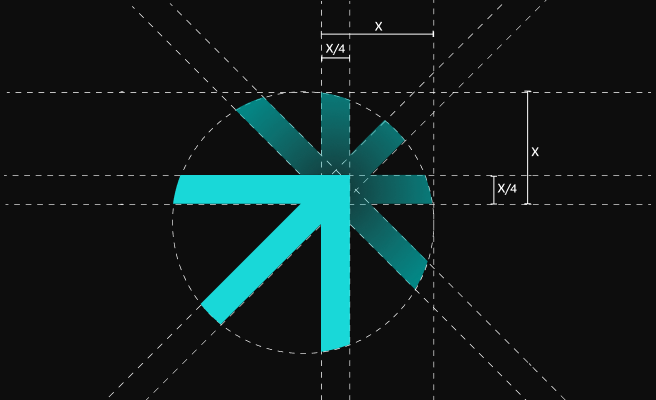Print Design
<p>Print design refers to the artistic process of creating visual content for physical printed materials such as brochures, business cards, posters, and magazines. Although digital media is dominant today, print design remains essential for tangible communication and marketing strategies.</p>
<p>Historically, print design has its roots in the early days of the printing press, evolving from simple black-and-white text to complex, colorful compositions that blend typography, imagery, and layout techniques. Its relevance persists in today’s digital age due to its tactile nature and ability to create lasting impressions.</p>
<h2 id="2">Components of Print Design</h2>
<p>Print design comprises several key components, each contributing to the overall effectiveness of the final printed piece:</p>
<ul>
<li><strong>Typography:</strong> The art of arranging type to make written language legible, readable, and visually appealing.</li>
<li><strong>Color:</strong> Using color theory to create harmony and evoke emotions.</li>
<li><strong>Imagery:</strong> Incorporating photographs, illustrations, and graphics to enhance the design.</li>
<li><strong>Layout:</strong> The arrangement of text and images on a page, ensuring balance and readability.</li>
<li><strong>Branding:</strong> Maintaining brand consistency with logos, fonts, and color schemes.</li>
</ul>
<h2 id="3">Benefits of Print Design</h2>
<p>Despite the rise of digital media, print design offers several unique advantages:</p>
<p><strong>Tangibility:</strong> Physical materials such as brochures and business cards create a tactile experience that digital media cannot replicate.</p>
<p><strong>Credibility:</strong> Professionally designed print materials can enhance the perceived credibility and trustworthiness of a brand.</p>
<p><strong>Targeted Marketing:</strong> Print materials can be distributed in specific locations or events, effectively reaching targeted audiences.</p>
<h3 id="4">Use Cases in Climate Tech</h3>
<p>Print design plays a significant role in the climate tech industry, especially for companies looking to build credibility and communicate their impact. For instance, a <a href="https://carbonclean.com/" style="color: #2896FF; text-decoration: underline;">carbon capture company</a> might use print brochures to explain their technology to potential investors and partners, showcasing detailed diagrams and data that highlight their solutions.</p>
<h3 id="5">Challenges in Print Design</h3>
<p>Print design comes with its own set of challenges:</p>
<p><strong>Cost:</strong> Printing high-quality materials can be expensive, especially for small businesses.</p>
<p><strong>Environmental Impact:</strong> The print industry has faced criticism for its environmental impact, but sustainable practices and materials are emerging to address these concerns.</p>
<p><strong>Time-Consuming:</strong> Creating and revising print designs can be a lengthy process compared to digital media.</p>
<h2 id="6">Practical Applications and Actionable Steps</h2>
<p>Here are some practical applications and steps to get started with effective print design:</p>
<ol>
<li><strong>Define Your Purpose:</strong> Clearly outline the goals of your print materials, whether it's to inform, persuade, or entertain.</li>
<li><strong>Know Your Audience:</strong> Understand the preferences and needs of your target audience to create relevant and engaging designs.</li>
<li><strong>Choose the Right Tools:</strong> Utilize professional design software such as Adobe InDesign or Illustrator to create high-quality designs. For more accessible options, tools like <a href="https://www.canva.com/" style="color: #2896FF; text-decoration: underline;">Canva</a> offer user-friendly templates.</li>
<li><strong>Proofread:</strong> Always proofread your designs for errors before sending them to print to avoid costly mistakes.</li>
<li><strong>Consider Sustainability:</strong> Opt for eco-friendly printing options, such as recycled paper and soy-based inks, to minimize environmental impact.</li>
</ol>
<h2 id="7">Conclusion</h2>
<p>Print design remains a vital component of marketing and communication strategies, offering unique benefits such as tangibility, credibility, and targeted marketing. By understanding its components, benefits, and challenges, businesses can effectively leverage print design to enhance their brand and communicate their message. <a href="https://www.impactbnd.com/blog/why-print-marketing-still-works-in-2021" style="color: #2896FF; text-decoration: underline;">Learn more about the importance of print marketing</a> and discover how it can complement your digital efforts.</p> <p>If you need inspiration on building credible and trustworthy brands, check out our work with <a href="https://www.whatifdesign.co/work/susteon-brand-website-design-carbon-capture-and-utilization" style="color:#2896FF; text-decoration:underline;">Susteon</a> and <a href="https://www.whatifdesign.co/work/labstart-website-design-climate-venture-studio" style="color:#2896FF; text-decoration:underline;">Labstart</a>.
<p>Looking for expert brand and communications support on your venture? <a href="https://cal.com/akhilak/what-if-design?duration=30" style="color:#2896FF; text-decoration:underline;">Book a free 1:1 consultation</a> with us today.</p></p>

Let's scale your impact with great design.
Free consultation, no sales pitch
Thank you! Your submission has been received!
Oops! Something went wrong while submitting the form.
Let’s talk
Nothing great is built alone.
Let’s connect about your vision, our work and how we can collaborate.
Get in touch

